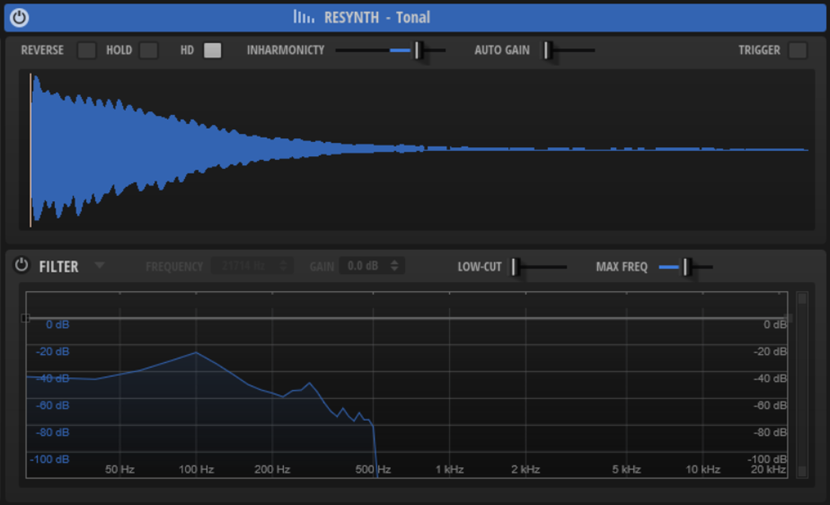Resynth Page
Activating Resynth allows you to transform your samples on a spectral level, in a way that is not possible using classic subtractive synthesis.
With Resynth, the sample is split into its individual frequency components and overtones. These can then be filtered, amplified, or adjusted in relation to each other. In Resynth mode, the spectrum becomes independent from the original temporal progression of the sample. The sound is not played faster or slower for higher or lower notes, but instead keeps its timing. You can change the playback speed without affecting the pitch. When playing other pitches than the original sample pitch, it is possible to preserve the natural formants of the sound or tweak them independently to create more artificial variations.
In Tonal mode, the sample playback uses the original spectrum of the sample, which can then be edited with parameters like Purity, Inharmonicity, etc.
Noise mode allows you to use the original spectrum to shape a white noise signal. This allows you to resynthesize non-tonal components, for example, overtone-rich inharmonic signals, such as cymbals. But you can also use tonal samples in Noise mode and experiment to create rather inharmonic and chaotic signals.
Finally, applying the spectral filter with its free-form curve allows you to shape the spectrum, both in Tonal and Noise mode, even further.
